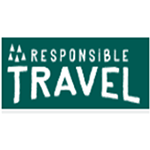
Master the Art of Crafting a Memorable and Sustainable Brand Identity for the Tourism Enterprise

Branding
Branding: 13 Questions to Harness the Power of Positive Branding and Unleash Tourism Enterprises Potential
Key to Success
- The role of branding in creating a unique identity for a tourism business or destination includes helping businesses and destinations differentiate themselves from competitors, attract travelers, and build brand loyalty.
- Maintaining consistent branding across different platforms and touchpoints, such as advertising, websites, and social media, to create a cohesive and memorable brand identity for travelers.
- The impact of branding on the Traveler experience includes contributing to a positive Traveler experience and leveraging their brand identity to create unique traveler experiences.
Accomplishments
- Identify connections between our brand with the destination brand and the experiences offered.
- Highlight our brand values and characteristics.
- Find connections between our brand with our target.
Time-Saving Tools
- The tourism destination market plan and strategic plan.
- Tourism road maps offered by the tourism destination
- Tourism destination demand research.
- An analysis of the traveler demand profile.
- Research about the traveler’s needs.
- Information about the potential distributors and local sellers.
- Information about the channels our competitors are using.
- Historical performance of our current channels.
- All documents could be applied to find relevant information.
Presentation
Branding for Small and Medium-sized Tourism Enterprises (SMTEs) involves creating a unique and cohesive identity that reflects the business’s commitment to responsible and eco-friendly practices. It plays a vital role in differentiating these businesses from competitors, appealing to environmentally-conscious travelers, and communicating the organization’s values and goals. Effective branding encompasses visual design, messaging, and storytelling, conveying the business’s operations’ sustainable ethos and positive impact. A strong brand also focuses on building credibility and trust through transparent reporting of sustainability achievements, obtaining industry-recognized certifications, and fostering meaningful partnerships with local communities and stakeholders. Ultimately, branding for Small and Medium-sized Tourism Enterprises (SMTEs) helps to attract like-minded customers, enhance the company’s reputation, and contribute to a more responsible and resilient tourism industry.
Here are some of the most important things that Small and Medium-sized Tourism Enterprises (SMTEs) need to know about brand identity:
- Consistency is critical: SMTEs must maintain consistency in their branding and marketing efforts. This means using consistent messaging, imagery, and tone of voice across all marketing channels, such as social media, websites, and promotional materials.
- Brand identity should reflect the business’s values and personality: SMTEs should ensure that their brand identity reflects their unique values and personality. This can help distinguish the business from competitors and attract travelers who share similar values.
- Brand identity can impact traveler loyalty: A strong brand identity can help build traveler loyalty and increase repeat business. Therefore, SMTEs should ensure that their branding and marketing efforts are aimed at building long-term traveler relationships.
- Brand identity can impact employee engagement: A strong brand identity can also impact employee engagement and satisfaction. When employees feel proud to work for a business with a strong brand identity, they are more likely to provide high-quality service and act as brand ambassadors.
- Brand identity should evolve: SMTEs should be willing to develop their brand identity over time as their business grows and changes. This may involve updating messaging, imagery, or other elements of their branding and marketing efforts.
In summary, Small and Medium-sized Tourism Enterprises (SMTEs) must understand the importance of brand identity in building a successful tourism business by maintaining consistency in branding and marketing efforts, reflecting its unique values and personality, and building traveler loyalty and employee engagement.
Brand Washing
Sustainable brand washing, also known as greenwashing, makes misleading or false claims about the environmental friendliness or sustainability of a company’s products or services. This deceptive marketing tactic can be harmful to both consumers and the environment. Here are some of the worst practices associated with sustainable brand washing:
- Vague or ambiguous claims: Using unclear terminology or undefined labels, such as “eco-friendly” or “natural,” without providing concrete information about how the product or service is environmentally sustainable.
- Irrelevant or misleading information: Highlighting a minor, insignificant eco-friendly aspect of a product or service while ignoring the company’s overall environmental impact or other unsustainable practices.
- Hidden trade-offs: Focusing on one area of sustainability while neglecting other important aspects, such as promoting a product’s recyclability but failing to address the energy and resources consumed during production.
- Overstating environmental benefits: Exaggerating the positive environmental impact of a product or service, creating a false impression of its sustainability.
- False certifications or endorsements: Using fabricated or unverified certifications, seals, or endorsements to give the appearance of third-party approval or validation of a product’s sustainability claims.
- Omission of important information: Deliberately leaving out essential details that would provide a more accurate representation of a product’s or service’s environmental impact.
- Misleading imagery: Using visuals or designs that suggest environmental friendliness, such as pictures of nature, green-colored packaging, or earthy symbols, without any substantiated claims to support these associations.
- Green by association: Associating a brand with environmentally friendly organizations, events, or initiatives to create the impression that the brand is also sustainable.
- Tokenism: Implementing a small, insignificant change or initiative to appear environmentally responsible while ignoring more significant, impactful areas where improvements could be made.
- False or unproven technology: Using untested or dubious technologies to solve environmental problems without sufficient evidence to support their effectiveness.
Sustainable brand washing not only undermines consumer trust but also detracts from the efforts of genuinely sustainable businesses. Therefore, consumers and regulators must remain vigilant and scrutinize green claims to hold companies accountable for their environmental impact.
GUIDING QUESTIONS
How can we promote responsible and sustainable practices throughout our branding? Implementing eco-friendly initiatives and supporting local communities will contribute to small tourism enterprises' long-term success and reputation within our brand.
YScala
- What sustainable values, principles, and personality traits do we want our brand to convey?
- How can we communicate our commitment to sustainability through our branding efforts?
- What messaging and imagery should we use to convey our sustainable brand identity?
- What makes our business unique regarding sustainability, and how can we incorporate that into our brand identity?
- How can we tailor our branding and marketing efforts to appeal to eco-conscious travelers?
- How can we ensure consistent, sustainable branding and marketing efforts across all channels, such as social media, websites, and promotional materials?
- What is our sustainable word-of-mouth marketing?
- How can our sustainable brand identity build traveler loyalty and employee engagement?
- How can we collaborate with other sustainable businesses and organizations to amplify our brand identity and impact?
- What sustainable tourism certifications or accreditations can we pursue to enhance our brand identity and credibility?
- How can we engage in ongoing sustainability efforts and initiatives to maintain and strengthen our brand identity?
- How can we measure and communicate the sustainable impact of our business to travelers and stakeholders?
- How can we evaluate the effectiveness of our sustainable brand identity and make adjustments as needed to stay relevant and competitive in the sustainable tourism industry?
By answering these questions, Small and Medium-sized Tourism Enterprises (SMTEs) can create a brand identity that reflects their commitment to sustainability, appeals to eco-conscious travelers, reflects their unique values and personality, and helps build traveler loyalty and employee engagement. It’s crucial for businesses to regularly evaluate their sustainable brand identity and make adjustments as needed to stay true to their values and remain competitive in a constantly evolving sustainable tourism industry.
Offering more information
Besides the 13 guiding questions we’ve provided to help us evaluate and improve our branding, we’ve compiled a list of valuable resources to further our knowledge and understanding of branding. Notably, these resources offer insights into best practices, sustainability, marketing, and more, catering to the needs of tourism professionals and stakeholders. Consequently, by exploring these links, you’ll be better equipped to make informed decisions and create a thriving, competitive, and sustainable destination for travelers from around the world.
Destination Marketing Association International (DMAI): DMAI (now known as Destinations International) is a global association for destination marketing organizations (DMOs). Their website offers resources, research, and best practices related to destination branding and marketing in the tourism industry.
Skift: Skift is a leading travel industry intelligence platform that covers various aspects of the tourism and hospitality sectors. They provide news, analysis, and reports on branding, marketing, and trends within the industry.
Travel Weekly: Travel Weekly is a widely recognized news and information source for the travel industry. Their website provides news, analysis, and insights on various aspects of the tourism industry, including branding and marketing.
Tourism Update: Tourism Update is a South African-based online publication that focuses on news and updates related to the African tourism industry. They cover topics such as destination branding, marketing campaigns, and industry trends.
As you conclude reading this orientation post, we’d like to invite you to explore the other insightful articles in our Business Tailor 4 Sustainable Tourism Develop Management Tool (BT4-STDM) blog. We invite you to engage with our community, share your perspectives, and contribute to this meaningful conversation by commenting below. Your experiences and ideas can help others in their sustainable tourism development management journey.
Let your like and recommend this post to improve your audience!
Share this post with friends, colleagues, or anyone else who might be interested.
Comments:
We invite you to engage with our community, share your perspectives, and contribute to this meaningful conversation by commenting below. Your experiences and ideas can help others in their sustainable tourism development management journey.













